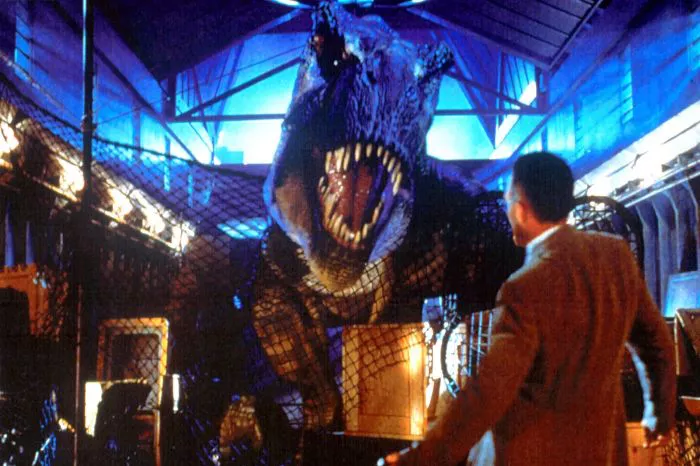The concept of resurrecting dinosaurs and bringing them back to life has long captured the imagination of scientists, filmmakers, and the general public alike. In the world of Jurassic Park, this fantastical idea becomes a reality, as geneticists and entrepreneurs alike endeavor to recreate the majestic creatures that once ruled the Earth millions of years ago. But how feasible is the concept of dinosaurs existing in a modern world, and what scientific principles underpin their existence in the Jurassic Park universe? In this comprehensive exploration, we’ll delve into the science behind Jurassic Park, examining the theoretical foundations of dinosaur cloning, genetic engineering, and the creation of prehistoric ecosystems in the present day.
Theoretical Framework:
The premise of Jurassic Park is rooted in the concept of genetic engineering and cloning, whereby scientists extract DNA from fossilized dinosaur remains and use advanced biotechnology to recreate living, breathing dinosaurs. While the idea of extracting intact DNA from fossilized bones is largely speculative, recent advancements in paleogenomics and DNA sequencing have brought us closer to unraveling the genetic secrets of extinct species.
One of the key challenges in resurrecting dinosaurs lies in the degradation of DNA over millions of years. Fossilized bones contain only fragments of genetic material, making it difficult to reconstruct complete genomes. However, recent studies have shown that fragments of dinosaur DNA can still contain valuable information about the genetic makeup of extinct species, offering tantalizing glimpses into the past.
Cloning Techniques:
In Jurassic Park, the process of cloning dinosaurs is depicted as a highly sophisticated and streamlined procedure, whereby scientists extract DNA from fossilized bones, fill in the gaps with genetic material from related species, and incubate the embryos in artificial environments until they hatch. While this process is simplified for dramatic effect, the real-world techniques of cloning and genetic engineering are far more complex and nuanced.
Cloning involves several stages, including DNA extraction, amplification, sequencing, and reconstruction. Scientists must also contend with ethical considerations, technical challenges, and limitations imposed by the available technology. Despite these obstacles, researchers continue to push the boundaries of genetic engineering, paving the way for new breakthroughs in the field of de-extinction.
Ethical Considerations:
The resurrection of dinosaurs raises profound ethical questions about the implications of bringing extinct species back to life and reintroducing them into modern ecosystems. While the allure of seeing living dinosaurs may be irresistible, the potential risks and consequences of such endeavors cannot be overlooked.
In Jurassic Park, the ethical dilemmas surrounding de-extinction are dramatized through the character of Dr. Ian Malcolm, who warns of the dangers of playing “God” and tampering with the natural order of the world. His cautionary tale serves as a sobering reminder of the ethical responsibilities that accompany scientific discovery and technological advancement.
Ecological Impact:
Another major consideration in the existence of dinosaurs in Jurassic Park is the potential ecological impact of reintroducing these prehistoric creatures into modern ecosystems. In the films, the creation of isolated island habitats such as Isla Nublar and Isla Sorna is intended to contain the dinosaurs and prevent them from interacting with human populations. However, as the events of the films demonstrate, nature has a way of defying human control, leading to catastrophic consequences.
The ecological ramifications of reintroducing dinosaurs into modern ecosystems are complex and multifaceted. While the presence of apex predators such as Tyrannosaurus rex and Velociraptor may disrupt local food chains and threaten native species, the reintroduction of herbivores such as Brachiosaurus and Triceratops could also have cascading effects on vegetation and habitat dynamics.
Conclusion:
While the existence of dinosaurs in Jurassic Park is largely a work of science fiction, it raises thought-provoking questions about the intersection of science, ethics, and imagination. While the resurrection of dinosaurs may remain a fantasy for now, the scientific principles and ethical considerations underlying their existence in the Jurassic Park universe offer valuable insights into the complexities of de-extinction and the quest to unlock the secrets of the past. As we continue to explore the possibilities of genetic engineering and biotechnology, the legacy of Jurassic Park will endure as a testament to the enduring fascination and wonder of prehistoric life.
Related Topics:
Unveiling the Behemoth: Exploring the Biggest Dinosaurs in Jurassic Park
Tyrannosaurus rex: Unraveling the Tyrant Lizard King
Is Rexy the strongest dinosaur in Jurassic Park?

